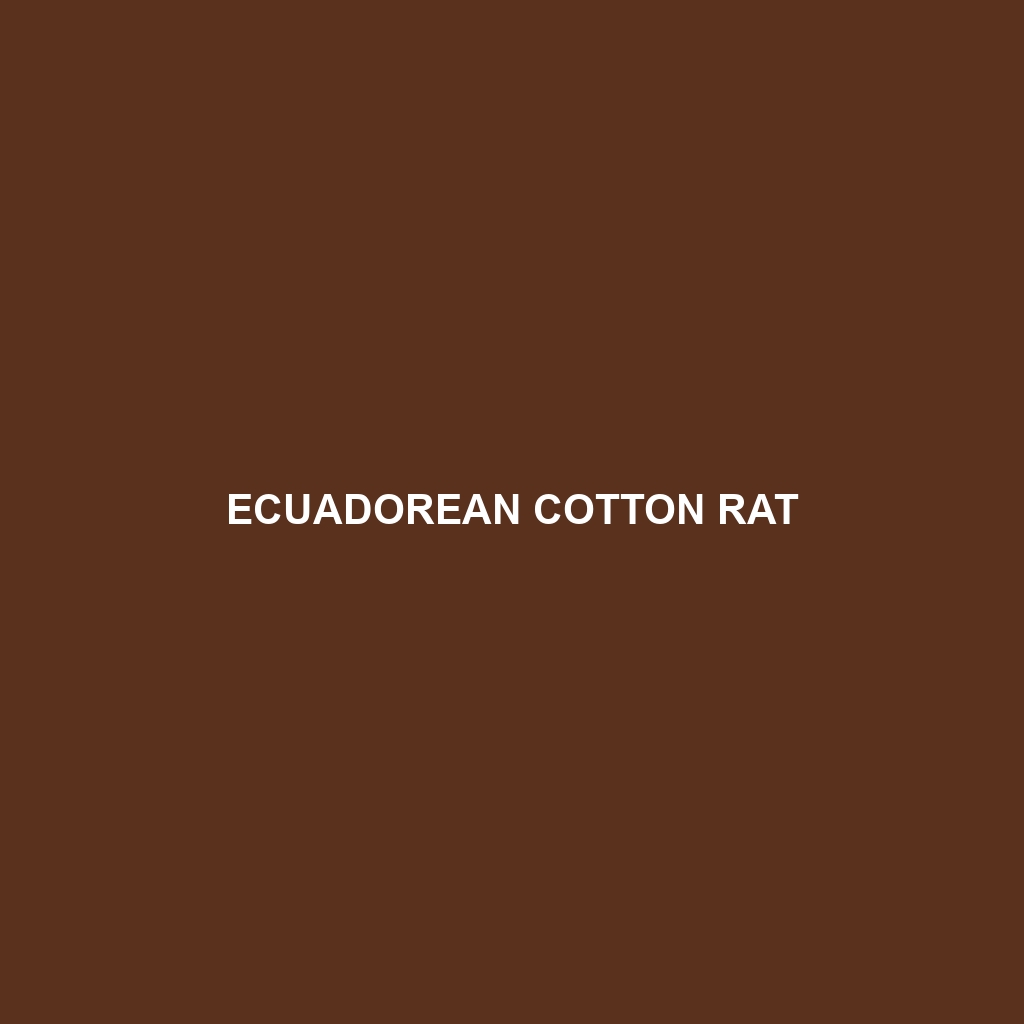Ecuadorean Cotton Rat
Common Name: Ecuadorean Cotton Rat
Scientific Name: Sigmodon alstoni
Habitat: The Ecuadorean Cotton Rat is primarily found in the Andean regions of Ecuador, where it inhabits grasslands, wetlands, and areas near rivers. These rodents are typically located at elevations ranging from 1,000 to 3,000 meters, favoring moist environments rich in vegetation that provide ample cover and food sources.
Physical Characteristics: Ecuadorean Cotton Rats are medium-sized rodents, measuring approximately 20-25 cm in body length, with an additional tail length of 10-15 cm. Their fur is predominantly grayish-brown with lighter underbellies, providing effective camouflage within their natural habitats. Distinctive features include large ears, a long tail, and sharp incisors, which aid in their feeding habits.
Behavior: These rodents are primarily nocturnal, exhibiting active foraging behavior during the night. They are known for their strong burrowing abilities and often create extensive tunnel systems. Ecuadorean Cotton Rats are social creatures, often found in small family groups, and communicate through various vocalizations and scent markings.
Diet: Ecuadorean Cotton Rats are herbivorous, feeding mainly on grasses, seeds, and aquatic plants. Their diet may shift depending on seasonal availability, which emphasizes their adaptability to changing environmental conditions. This rodent plays a critical role in seed dispersal within its ecosystem, contributing to plant propagation.
Reproduction: The reproductive habits of the Ecuadorean Cotton Rat typically include multiple litters per year, with breeding seasons peaking during the rainy months. Each litter usually consists of 3 to 8 offspring. Maternal care is significant, with females nursing and protecting young until they are old enough to venture out of the burrow.
Conservation Status: Currently, the Ecuadorean Cotton Rat is classified as ‘Vulnerable’ on the IUCN Red List due to habitat loss and environmental degradation. Conservation efforts are vital in ensuring the survival of this species and its habitat.
Interesting Facts: The Ecuadorean Cotton Rat has an important role as a prey species for various predators, including birds of prey and snakes. Additionally, they are known to have high reproductive rates, which can lead to population booms in favorable conditions, making them a significant component of the food web.
Role in Ecosystem: The Ecuadorean Cotton Rat plays a crucial role in its ecosystem by aiding in seed dispersal and providing food for predators. Their burrowing activities also contribute to soil aeration and nutrient cycling, which benefits the surrounding vegetation and overall ecological health.
